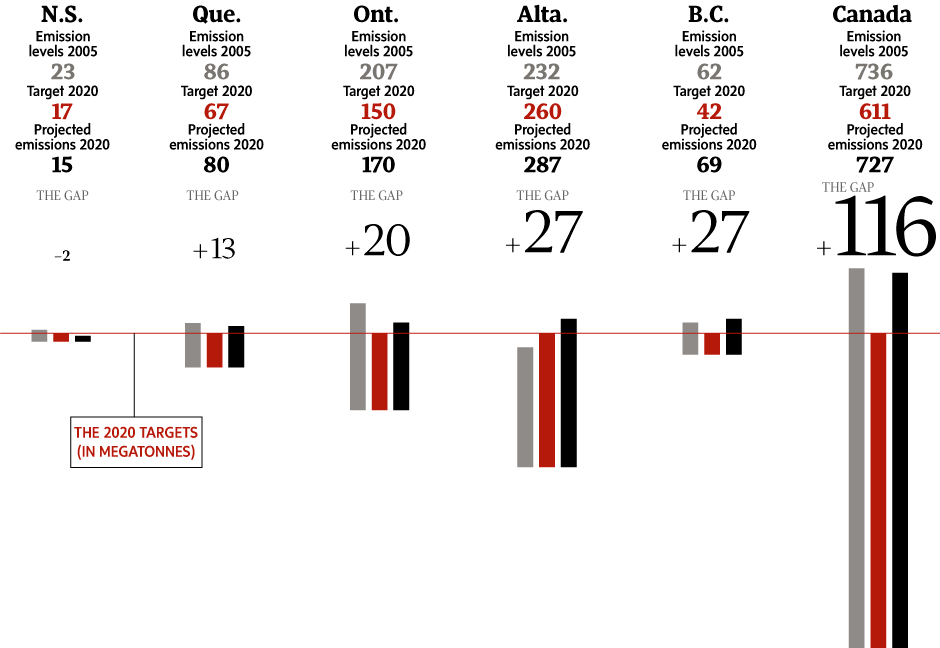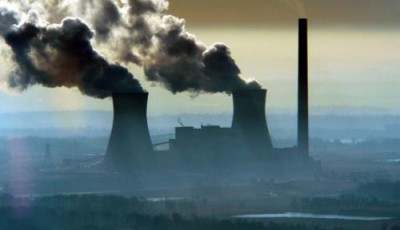Who really is responsible for climate change and industrial emissions policy in Canada?
 By Ken White
By Ken White
GLOBE-Net, March 25, 2015 – There seems to be no end to press releases announcing good things to deal with climate change and equally no end to criticism for alleged failings in this regard.
All three levels of government share in the plaudits and criticisms for achievements or failures related to climate change, which is understandable given the lack of clarity as to who actually is responsible for climate change related matters in Canada.
Press reports, online blogs and even jury-peered papers are ripe with policy suggestions on how best Canada should regulate and alleviate the negative impacts of climate change and carbon emissions. But the question remains, who exactly is responsible for climate change policy in Canada?
Canadian public policy on environmental and climate related issues, on the surface at least, appears to be fragmented and a certain level of fuzziness exists in the public realm at least on where climate-related responsibilities fall between federal and provincial jurisdictions.
Despite this, a workable paradigm on the exercise of respective powers between provincial and federal governments has evolved based in part on the practical realities of regulation and in part on jurisprudence.
The Constitution does not help
While Canada’s 1867 Constitution is silent on the issue of responsibility for ‘the environment’, the constitutional foundation for the role of the provinces with respect to environmental issues is based largely on provincial ownership of natural resources and the associated need to protect those resources.
A difficulty arises for the provinces when addressing cross-border aspects of pollution. Apart from the specific areas clearly under federal jurisdiction such as aviation, navigable ocean waters and ocean fisheries, provinces are limited to matters within their own borders. In practice, however, many provinces have entered into multilateral agreements.
For example, the provinces and U.S. states along the shores of the Great Lakes recently concluded the Great Lakes—St. Lawrence River Basin Sustainable Water Resources Agreement.
Under this agreement, individual actions by two Canadian provinces and eight U.S. states resulted in the harmonization of regulations on the management of Great Lake resources. Today it is helping maintain the sustainable management of these waters.”[1]
In its 2007 Climate Change Plan, the federal government stated that Provinces, territories and municipalities control many of the important levers for making significant reductions in greenhouse gas emissions from particular sectors.
This is very true, as over 85% of Canada’s total greenhouse gas emissions are emitted in areas under sole or partial provincial/territorial responsibility.[2] It is this context that the provinces and territories are developing and expanding measures to reduce greenhouse gases.

Industrial Emissions
Provinces have jurisdiction to regulate emissions from industries such as mining and manufacturing where the pollution does not cross international boundaries.
Various provinces are re-examining and looking at ways to reduce emissions not just from industrial emissions, but generally. Ideas being considered range from carbon taxes, alternative energy incentives, or even international collaborations on the low carbon economy.
And for its part, the federal government has the authority to regulate emissions from those industries that are directly under its jurisdiction, including aviation and inter-provincial and international transportation.
The federal government also has the authority to regulate air pollution released in Canada that also pollutes outside of the country, including United States and overseas.
Toxic Substances and Greenhouse Gases
The federal government has overall authority to identify and regulate the release of toxic substances, including mercury and asbestos, into the air, land or water. In fact, the federal government jurisdiction to regulate the emission of greenhouse gases is based largely on its toxic substances power.
“In 2005, the government added six greenhouse gases to the List of Toxic Substances set out in Schedule 1 of the Canadian Environmental Protection Act, 1999, and arguably now has jurisdiction to regulate the emissions of these greenhouse gases.”[3] The federal government used this jurisdiction in 2012 when it made regulations to reduce the emission of carbon dioxide from coal-fired generation of electricity.
Buildings and Real Property
While the provinces have jurisdiction over most types of buildings, businesses, industries and intra-provincial transportation, and can regulate to control the greenhouse gas emissions related to these areas, in reality all levels of government have the capacity to regulate building codes. At the municipal level these codes are becoming more focused on reducing energy consumption and greenhouse gas emissions.
Taxing for Climate Change
Both federal and provincial governments have broad jurisdiction powers to impose taxes and both could institute carbon taxes. British Columbia has already done so and Quebec began collecting a carbon tax on “hydrocarbons” (petroleum, natural gas and coal) in 2007. Alberta has an intensity based carbon tax.
Ontario recently released a discussion paper for a strategy to address climate change which includes placing a price on carbon and possible taxation measures.
Both the federal government and the provinces have the authority to enact greenhouse gas reduction strategies or to set emission allowances and corresponding trading regimes. Quebec is active in a carbon trading market with the state of California.
Depending on how such systems are structured, provincial jurisdiction might be based in the power to regulate property and civil rights while federal jurisdiction might be based in the federal residuary power, if climate change were deemed a matter of national concern.
International and Inter-provincial Trade
The Federal government has the power to regulate international and interprovincial trade and commerce including inter-country cap and trade programs and associated regulations and emissions standards for heavy-duty vehicles before they can be imported.
The federal government also has jurisdiction in negotiating and implementing both bilateral and multilateral trade agreements, including any potential agreements on either industrial or carbon emissions.
A potential international cap and trade agreement would require substantial and highly sensitive negotiations with major emitters over pollution caps and the resultant penalties if these caps and/or the terms of acquiring (buying and selling credits) are not respected.
A patchwork bottom-up approach for cap and trade regimes at the provincial level could create new or worsen existing inter-provincial barriers to trade and commerce, which would defeat the overall objective of reducing carbon emissions with minimal negative economic impacts.
Clearly, strong leadership will be required either through collective and coordinated action of the federal government, the provinces or both.
Conclusion
Jurisdiction over climate change and reducing carbon emissions is complicated in Canada, although a “Practical Divisions of Power” has evolved over time between the federal government and the provinces.
However, if Canada’s climate change and industrial emissions policy is to be effective and recognized as such internationally, especially through a cap and trade mechanism, strong leadership at the federal level is a prerequisite.
Ken White is the principal of Acton White Consulting and is a frequent contributor to GLOBE-Net.
References
[1] Canadian Federalism in the Context of Combating Climate Change, Alexis Bélanger
[2] Ibid, quoting Government of Canada, “A Climate Change Plan for the Purposes of the Kyoto Protocol
Implementation Act – 2007” (6 September 2007),
[3] Federal and Provincial Jurisdiction to Regulate Environmental Issues, Library of Parliament, Publication, 2013-86-e.
Provincial GHG Graphic – Source: ENVIRONMENT CANADA Graphic: TRISH McALASTER/THE GLOBE AND MAIL







